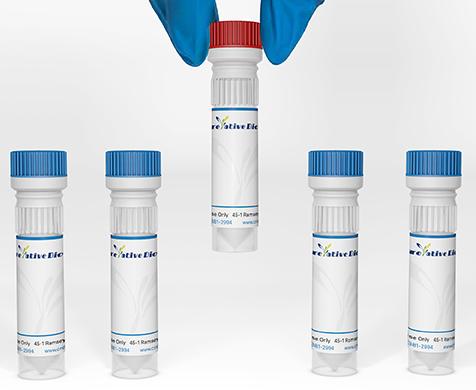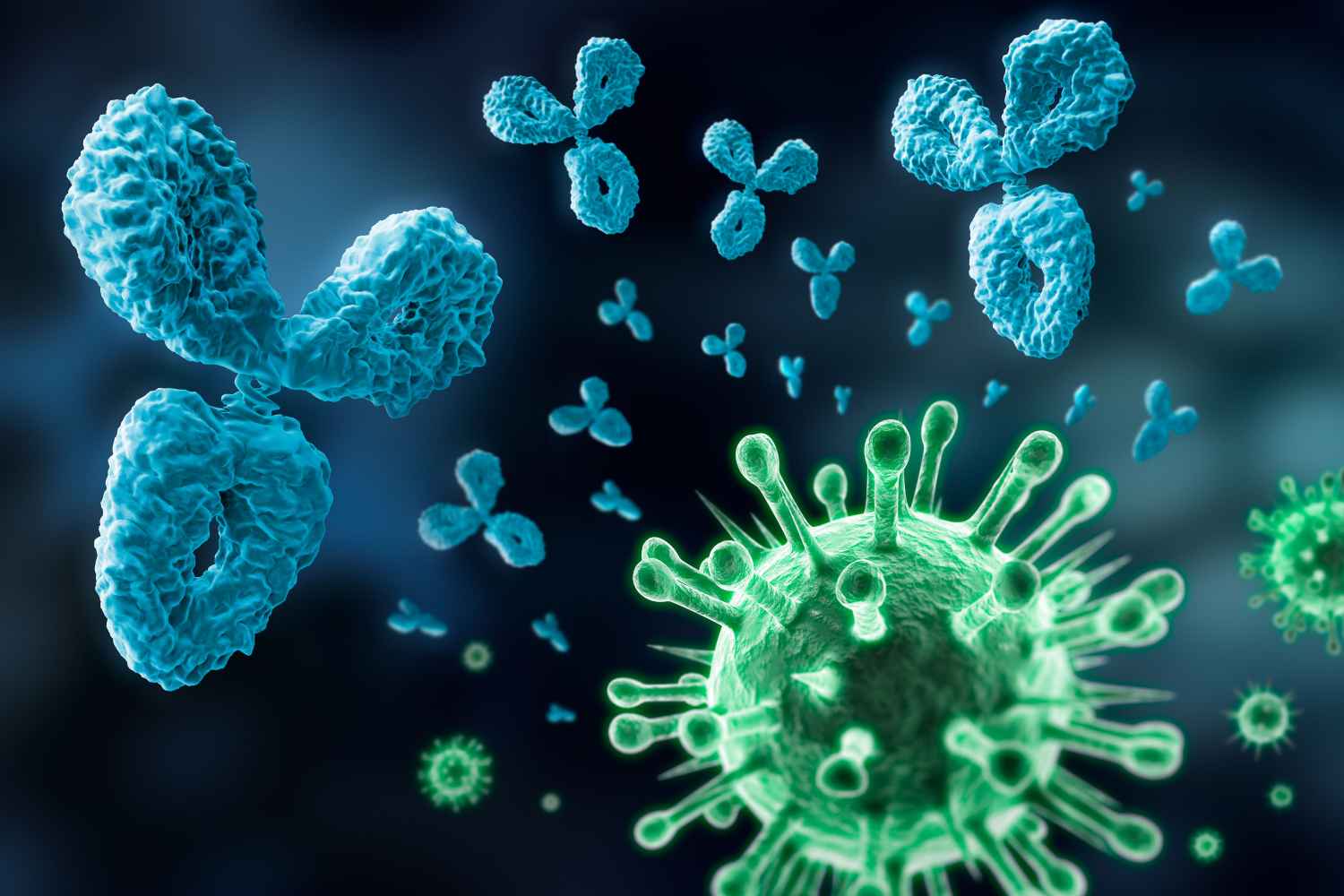SST
The hormone somatostatin has active 14 aa and 28 aa forms that are produced by alternate cleavage of the single preproprotein encoded by this gene. Somatostatin is expressed throughout the body and inhibits the release of numerous secondary hormones by binding to high-affinity G-protein-coupled somatostatin receptors. This hormone is an important regulator of the endocrine system through its interactions with pituitary growth hormone, thyroid stimulating hormone, and most hormones of the gastrointestinal tract. Somatostatin also affects rates of neurotransmission in the central nervous system and proliferation of both normal and tumorigenic cells.
Full Name
somatostatin
Research Area
Neuroscience
Function
Somatostatin-14
Inhibits the secretion of pituitary hormones, including that of growth hormone/somatotropin (GH1), PRL, ACTH, luteinizing hormone (LH) and TSH. Also impairs ghrelin- and GnRH-stimulated secretion of GH1 and LH; the inhibition of ghrelin-stimulated secretion of GH1 can be further increased by neuronostatin.
Neuronostatin
May enhance low-glucose-induced glucagon release by pancreatic alpha cells (By similarity).
This effect may be mediated by binding to GPR107 and PKA activation (By similarity).
May regulate cardiac contractile function (By similarity).
May compromise cardiomyocyte viability (By similarity).
In the central nervous system, may impair memory retention and may affect hippocampal excitability (By similarity).
May also have anxiolytic and anorexigenic effects (By similarity).
May play a role in arterial pressure regulation (By similarity).
May inhibit basal, but not ghrelin- or GnRH-stimulated secretion of GH1 or LH, but does not affect the release of other pituitary hormones, including PRL, ACTH, FSH or TSH. Potentiates inhibitory action of somatostatin on ghrelin-stimulated secretion of GH1, but not that on GnRH-stimulated secretion of LH (PubMed:29615476).
Inhibits the secretion of pituitary hormones, including that of growth hormone/somatotropin (GH1), PRL, ACTH, luteinizing hormone (LH) and TSH. Also impairs ghrelin- and GnRH-stimulated secretion of GH1 and LH; the inhibition of ghrelin-stimulated secretion of GH1 can be further increased by neuronostatin.
Neuronostatin
May enhance low-glucose-induced glucagon release by pancreatic alpha cells (By similarity).
This effect may be mediated by binding to GPR107 and PKA activation (By similarity).
May regulate cardiac contractile function (By similarity).
May compromise cardiomyocyte viability (By similarity).
In the central nervous system, may impair memory retention and may affect hippocampal excitability (By similarity).
May also have anxiolytic and anorexigenic effects (By similarity).
May play a role in arterial pressure regulation (By similarity).
May inhibit basal, but not ghrelin- or GnRH-stimulated secretion of GH1 or LH, but does not affect the release of other pituitary hormones, including PRL, ACTH, FSH or TSH. Potentiates inhibitory action of somatostatin on ghrelin-stimulated secretion of GH1, but not that on GnRH-stimulated secretion of LH (PubMed:29615476).
Biological Process
Cell surface receptor signaling pathway
Cell-cell signaling
Chemical synaptic transmission
Digestion
G protein-coupled receptor signaling pathway
Hormone-mediated apoptotic signaling pathway
Hyperosmotic response
Negative regulation of cell population proliferation
Regulation of cell migration
Regulation of postsynaptic membrane neurotransmitter receptor levels
Response to acidic pH
Response to amino acid
Response to nutrient
Response to steroid hormone
Response to xenobiotic stimulus
Somatostatin signaling pathway
Cell-cell signaling
Chemical synaptic transmission
Digestion
G protein-coupled receptor signaling pathway
Hormone-mediated apoptotic signaling pathway
Hyperosmotic response
Negative regulation of cell population proliferation
Regulation of cell migration
Regulation of postsynaptic membrane neurotransmitter receptor levels
Response to acidic pH
Response to amino acid
Response to nutrient
Response to steroid hormone
Response to xenobiotic stimulus
Somatostatin signaling pathway
Cellular Location
Secreted
PTM
C-terminal amidation of the neuronostatin peptide is required for its biological activity, including for the regulation of mean arterial pressure.
View more
Anti-SST antibodies
+ Filters
 Loading...
Loading...
Target: SST
Host: Mouse
Antibody Isotype: IgG1
Specificity: Human
Clone: CBT4119
Application*: IH, F
Target: SST
Host: Rat
Antibody Isotype: IgG2b
Specificity: Guinea pig, Human, Mouse, Pig, Rat
Clone: YC7
Application*: C, P
Target: SST
Host: Mouse
Antibody Isotype: IgG1
Specificity: Human, Mouse, Rat
Clone: SOM-018
Application*: IF, IH, C, P
Target: SST
Host: Rat
Antibody Isotype: IgG2b
Specificity: Human
Clone: CBXS-3424
Application*: E, IH
Target: SST
Host: Rat
Antibody Isotype: IgG2b
Specificity: Human
Clone: CBXS-2976
Application*: IH
Target: SST
Host: Mouse
Antibody Isotype: IgG1
Specificity: Human
Clone: CBXS-2459
Application*: E, F, IH, WB
Target: SST
Host: Rat
Antibody Isotype: IgG2b
Specificity: Human, Rat
Clone: CBXS-2334
Application*: IH
Target: SST
Host: Mouse
Specificity: Human
Clone: CBXS-2234
Application*: WB, IP, IF, P, E
Target: SST
Host: Rat
Antibody Isotype: IgG1
Specificity: Human, Mouse
Clone: CBXS-1974
Application*: IH, IC
Target: SST
Host: Rabbit
Antibody Isotype: IgG
Specificity: Human
Clone: CBXS-1490
Application*: E, P
Target: SST
Host: Rabbit
Antibody Isotype: IgG
Specificity: Human
Clone: CBXS-1489
Application*: P
Target: SST
Host: Rat
Antibody Isotype: IgG2b
Specificity: Human
Clone: CBXS-0738
Application*: IH
Target: SST
Host: Rat
Antibody Isotype: IgG2b
Specificity: Human
Clone: CBXS-0736
Application*: C, P
Target: SST
Host: Rabbit
Antibody Isotype: IgG
Specificity: Human, Mouse, Rat
Clone: CBXS-5980
Application*: F, IC, IF, WB
Target: SST
Host: Mouse
Antibody Isotype: IgG
Specificity: Rat
Clone: CBLG1-2443
Application*: WB
Target: SST
Host: Mouse
Antibody Isotype: IgG
Specificity: Human
Clone: CBLG1-2442
Application*: WB
Target: SST
Host: Mouse
Antibody Isotype: IgG1
Specificity: Human
Clone: 7G5
Application*: E, F, IH, P, WB
Target: SST
Host: Mouse
Antibody Isotype: IgG1, κ
Specificity: Human, Mouse, Rat
Clone: ICDCLS
Application*: P
Target: SST
Host: Rabbit
Antibody Isotype: IgG
Specificity: Human, Mouse, Rat
Clone: 9H33L7
Application*: IF, IC, F, WB
More Infomation
Hot products 
-
Mouse Anti-ACKR3 Recombinant Antibody (V2-261265) (CBMAB-C1023-LY)

-
Mouse Anti-BLNK Recombinant Antibody (CBYY-0623) (CBMAB-0626-YY)

-
Mouse Anti-AMACR Recombinant Antibody (CB34A) (CBMAB-CA034LY)

-
Mouse Anti-CD1C Recombinant Antibody (L161) (CBMAB-C2173-CQ)

-
Mouse Anti-CSPG4 Recombinant Antibody (CBFYM-1050) (CBMAB-M1203-FY)

-
Mouse Anti-C5b-9 Recombinant Antibody (aE11) (CBMAB-AO138LY)

-
Mouse Anti-ADAM12 Recombinant Antibody (V2-179752) (CBMAB-A1114-YC)

-
Mouse Anti-AAV8 Recombinant Antibody (V2-634028) (CBMAB-AP022LY)

-
Rat Anti-CD63 Recombinant Antibody (7G4.2E8) (CBMAB-C8725-LY)

-
Mouse Anti-BIRC7 Recombinant Antibody (88C570) (CBMAB-L0261-YJ)

-
Rabbit Anti-CCN1 Recombinant Antibody (CBWJC-3580) (CBMAB-C4816WJ)

-
Rat Anti-ABCC11 Recombinant Antibody (V2-179001) (CBMAB-A0236-YC)

-
Mouse Anti-DISP2 Monoclonal Antibody (F66A4B1) (CBMAB-1112CQ)

-
Mouse Anti-CCN2 Recombinant Antibody (CBFYC-2383) (CBMAB-C2456-FY)

-
Mouse Anti-C5B-9 Recombinant Antibody (CBFYA-0216) (CBMAB-X0304-FY)

-
Mouse Anti-AP4E1 Recombinant Antibody (32) (CBMAB-A2996-YC)

-
Mouse Anti-BPGM Recombinant Antibody (CBYY-1806) (CBMAB-2155-YY)

-
Mouse Anti-ABL2 Recombinant Antibody (V2-179121) (CBMAB-A0364-YC)

-
Mouse Anti-CD24 Recombinant Antibody (HIS50) (CBMAB-C10123-LY)

-
Mouse Anti-CASP7 Recombinant Antibody (10-01-62) (CBMAB-C2005-LY)

For Research Use Only. Not For Clinical Use.
(P): Predicted
* Abbreviations
- AActivation
- AGAgonist
- APApoptosis
- BBlocking
- BABioassay
- BIBioimaging
- CImmunohistochemistry-Frozen Sections
- CIChromatin Immunoprecipitation
- CTCytotoxicity
- CSCostimulation
- DDepletion
- DBDot Blot
- EELISA
- ECELISA(Cap)
- EDELISA(Det)
- ESELISpot
- EMElectron Microscopy
- FFlow Cytometry
- FNFunction Assay
- GSGel Supershift
- IInhibition
- IAEnzyme Immunoassay
- ICImmunocytochemistry
- IDImmunodiffusion
- IEImmunoelectrophoresis
- IFImmunofluorescence
- IGImmunochromatography
- IHImmunohistochemistry
- IMImmunomicroscopy
- IOImmunoassay
- IPImmunoprecipitation
- ISIntracellular Staining for Flow Cytometry
- LALuminex Assay
- LFLateral Flow Immunoassay
- MMicroarray
- MCMass Cytometry/CyTOF
- MDMeDIP
- MSElectrophoretic Mobility Shift Assay
- NNeutralization
- PImmunohistologyp-Paraffin Sections
- PAPeptide Array
- PEPeptide ELISA
- PLProximity Ligation Assay
- RRadioimmunoassay
- SStimulation
- SESandwich ELISA
- SHIn situ hybridization
- TCTissue Culture
- WBWestern Blot

Online Inquiry







